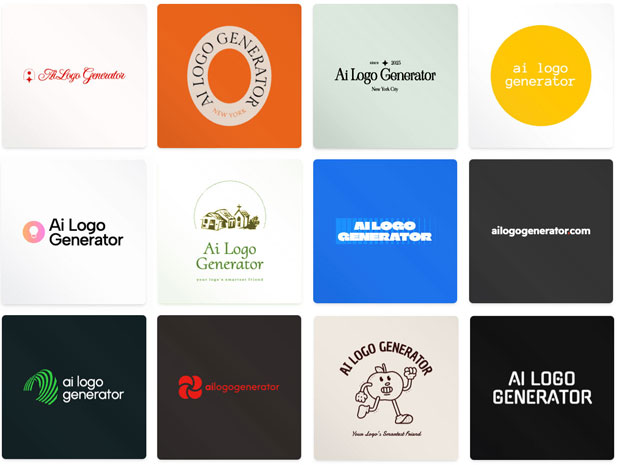Insights

Traps when creating a logo using an AI generator
AI has transformed the way businesses approach branding, making it easier than ever to create logos and visual identities in just a few clicks. From sleek design platforms to instant logo generators, the possibilities feel endless.
However there are several common pitfalls to look out for when creating a logo with an AI generator, such as weak understanding of target audience, lack of originality, limited emotional storytelling, copyright risks, customisation challenges and format usability.
Don’t underestimate the power of a good logo and branding. Remember you never get a second chance to make a good first impression. Your logo is often the first point of contact a customer has with your business, so it’s worth investing in getting it right.
Below are some of the common pitfalls to watch out for when using a logo generator to design your logo.
Lack of Originality and Distinctiveness
AI logo generators often create designs based on templates and existing styles, making it easy to end up with generic or similar logos to other businesses. This undermines a brand's ability to stand out and can result in issues with trademarking if another business has a similar design.
Weak Brand Storytelling and Personalisation
AI tools rely on pattern recognition rather than deep understanding of a business’s values, mission, and target audience. This frequently results in logos that lack emotional resonance and do not connect meaningfully with the intended audience.
Typographic Pitfalls
AI can generate unusual fonts, but some may be hard to read or not licensed for commercial use. You will need to verify font rights before using them commercially.
No Human Touch & Emotional Connection
Logos are not just visuals — they’re storytelling tools. AI may miss emotional nuance, symbolism, or cultural meaning. A designer’s refinement will often add a layer of authenticity and emotional connection aimed at the target audience.
Not Designed with the Broader Graphic Language in Mind
Good branding isn't just a logo, it's all the customer touchpoints such as stationery, website, social channels etc. Good logo design will have clever elements and colours built into it that can easily be expanded out into a broader graphic language. This will not be considered when using an AI logo generator.
Limited Customisation and Format Issues
Customisation options with AI-generated logos are typically restricted, making it difficult to fine-tune design elements or adapt logos for different applications such as responsive websites, print, or embroidery. Many platforms only provide raster formats (.jpg, .png) rather than scalable vector files essential for professional use.
Copyright and Licensing Risks
The source of the design elements used by AI is often unclear, leading to potential copyright violation or the inability to trademark the logo. If part of the logo originates from copyrighted material, legal challenges may arise, especially for companies hoping to build a unique brand identity.
Overcomplicated Prompts and Cluttered Designs
Providing too many details in an AI prompt can result in overly busy, complex logos that are hard to scale, difficult to recognise, and not aligned with best design practices such as simplicity and scalability. Minimalism is often sacrificed for unnecessary visual complexity.
No Human Judgment or Strategic Partnership
AI cannot provide strategic design thinking, cultural awareness, or emotional intelligence that human designers offer. These qualities are crucial for avoiding tone-deaf or contextually inappropriate designs and for building long-term branding relationships.
Incomplete Review and Refinement Process
Relying solely on the initial output of the AI logo generator without thorough review, refinement, or testing in real-world scenarios can lead to missed opportunities for improvement and poor final results.
Conclusion
While AI logo generators provide speed and convenience, they pose significant challenges related to originality, brand alignment, copyright and customisation.
Use AI as a starting point for brainstorming and ideation, then refine with a professional designer and legal checks (if needed) to ensure your brand’s identity is unique, consistent, protected and able to be reproduced properly.
To find out more, feel free to reach out to our team at our Contact page.
